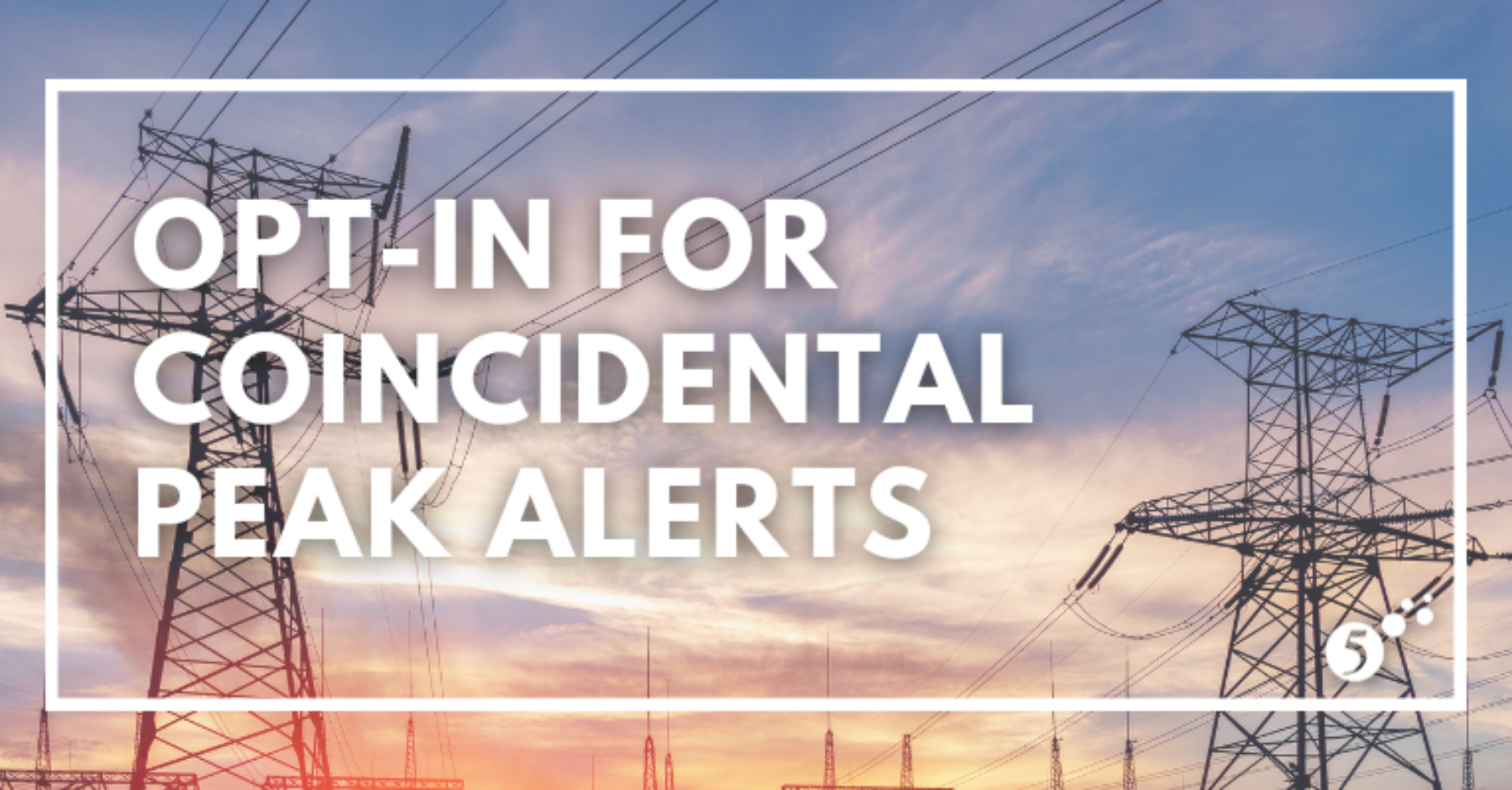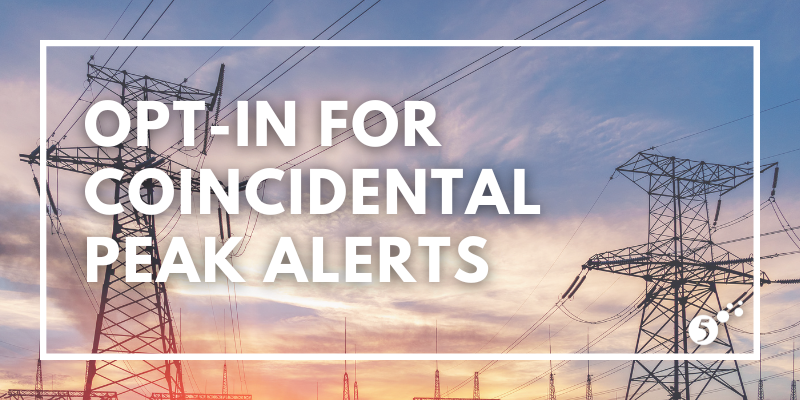4 min read
Coincidental Peak Alerts 2025
By 5 on April 25, 2025
Topics: Markets PJM NYISO ERCOT Demand Response Resiliency
7 min read
WINTER POWER OUTLOOK: RELIABILITY & RISK ASSESSMENTS ACROSS KEY MARKETS
By 5 on January 14, 2025
Before each winter, many organizations responsible for overseeing North America's power grids release risk assessments. These reports primarily focus on reliability and resiliency, with less emphasis on wholesale prices. Although wholesale prices can indicate risk, forward prices do not always fully capture the potential risk of energy scarcity. Conversely, forward price volatility may sometimes reflect risks that are less likely than the prices suggest. This article summarizes some of these risk assessments and highlights the risks currently indicated by forward market prices for January and February 2025.
To start, the North American Electric Reliability Corporation (NERC) releases a Winter Reliability Assessment (WRA) each fall, covering key markets and regions across North America, including PJM, New York, New England, and Texas. This year’s report largely aligns with expectations, indicating that most deregulated regions face reliability risks during periods of "above-normal" load conditions. This risk summary is shown below in Figure 1.
Figure 1. Winter Reliability Risk Area Summary, by NERC
According to NERC, the primary risk facing most regions this winter is the availability of natural gas. While the power industry has made significant strides since 2021 to enhance power plant performance, much of this progress has focused on improvements in planning and forecasting. However, the most significant challenge remains the capacity of natural gas pipelines and maintaining adequate pipeline pressure levels during periods of extreme cold, which continue to pose the greatest threat to reliable power production during the winter months.
Topics: Natural Gas PJM NYISO ERCOT Procurement
5 min read
BARRIERS TO A REAL NUCLEAR POWER RENAISSANCE
By 5 on October 22, 2024
Topics: Natural Gas PJM NYISO ERCOT Procurement
4 min read
SUMMER 2024 MARKET REVIEW
By 5 on August 29, 2024
As we approach the end of August, the focus of the summer typically begins to shift towards things like kids returning to school, parents seeking a more normal schedule, the excitement and optimism of each football team’s upcoming season, and hopefully milder temperatures across our power grids.
Given this, we thought it would be appropriate to give a quick update of how the summer has played out so far, by region and commodity (gas and power).
Topics: Natural Gas PJM NYISO ERCOT Procurement
4 min read
Electricity Market Update
By 5 on June 26, 2024
ERCOT
There are two words that describe the reaction of most commercial clients shopping for electricity in Texas: Sticker Shock. Figure 1 shows how the wholesale price of electricity for calendar years 2025 through 2028 has traded over the last four years. In ERCOT, electricity markets were at all-time lows of approximately $20/MWh in the months immediately before the pandemic. Over the last 48 months, power prices in ERCOT have more than doubled as wholesale prices are now more than $50/MWh for calendar years 2025 through 2028. The steady rise of electricity prices in ERCOT is largely driven by concerns that there is not enough supply to meet growing demand across the state. This demand is coming from power-hungry data centers used to support the rapid growth in AI, technology, and cryptocurrency mining in addition to manufacturing and population growth throughout the state. While substantial amounts of electricity from new solar and wind-generating assets have come online, those intermittent resources cannot be counted on to operate on demand. These are some of the dominant factors that have pushed up wholesale electricity prices in ERCOT.
Topics: PJM NYISO ERCOT Procurement
5 min read
Understanding RECs in New York 2024
By 5 on June 20, 2024
New York, like many states across the country, has a standard by which certain qualifying renewable generation assets are awarded one Renewable Energy Certificate (REC) for each MWh of electricity delivered to the grid. RECs provide two main functions to the market:
Topics: Markets NYISO
4 min read
Coincidental Peak Alerts 2024
By 5 on May 14, 2024
Topics: Markets PJM NYISO ERCOT Demand Response Resiliency
11 min read
May 2024 - Energy Market Letter
By Jon Moore on May 14, 2024
On behalf of the team at 5, I am pleased to forward our May 2024 market letter. In this edition, we discuss several interrelated topics. First, we look at ongoing legal challenges to two new federal energy regulations, (i) the SEC’s climate change reporting rules, and (ii) the EPA’s new power plant emission standards. Second, we address a question we are hearing often from our clients, especially those faced with rising energy prices: “Could President Trump’s election reduce the price of electricity?”
Topics: Markets Natural Gas NYISO ERCOT Sustainability Newsletters Education Renewables
1 min read
Webinar Recording: Earning Energy Revenue to Fund Efficiency & Compliance Projects in New York Feb 2024
By 5 on February 2, 2024
Topics: Markets NYISO Videos Education
2 min read
NY's Peaking Plant Problem
By 5 on November 28, 2023
In 2019, the New York State Department of Environmental Conservation (DEC) adopted a regulation to limit nitrogen oxide (NOx) emissions from simple-cycle combustion turbines. Combustion turbines known as “peakers” typically operate to maintain bulk power system reliability during the most stressful operating conditions, such as periods of peak electricity demand. Pursuant to the Peaker Rule, 1,500 MW of peakers were to shut down by 2025 to comply with the emissions requirements. Around 1,000 MWs of peakers retired by May 2023 and another 590 MWs were scheduled for retirement by May 2025.
On November 21, 2023, the NYISO determined that the peaker retirements scheduled for 2025 had to be postponed. The NYISO concluded that retirement of the peaker plants could cause a shortfall in generation for New York City on a 95˚ day in 2024 and 2025. Figure 1 shows that in those years, the Reserve Margin (the difference between the forecasted amounts of supply and demand) is especially tight. The NYISO’s solution is to keep four barge-mounted peakers running until the later of May 2027 or the date on which the Champlain Hudson Power Express (CHPE) line is completed. CHPE, a 1,250 MW transmission line being developed by an affiliate of Blackstone, will bring power from Canada into New York City. The CHPE line is scheduled for completion in the spring of 2026.
From a market perspective, one might assume the addition of 508 MW of capacity from these barge generators added to summer reserves would lower forward capacity prices for the summer of 2025, but that does not appear to be the case. It is likely that the market was assuming the NYISO would take these steps to account for a possible capacity shortfall. That and the additional market risk still present in the demand curve reset and capacity accreditation changes that are planned for roll-out in May 2025 means the market has not really seen any material change in forward capacity or energy prices for the summer of 2025.








